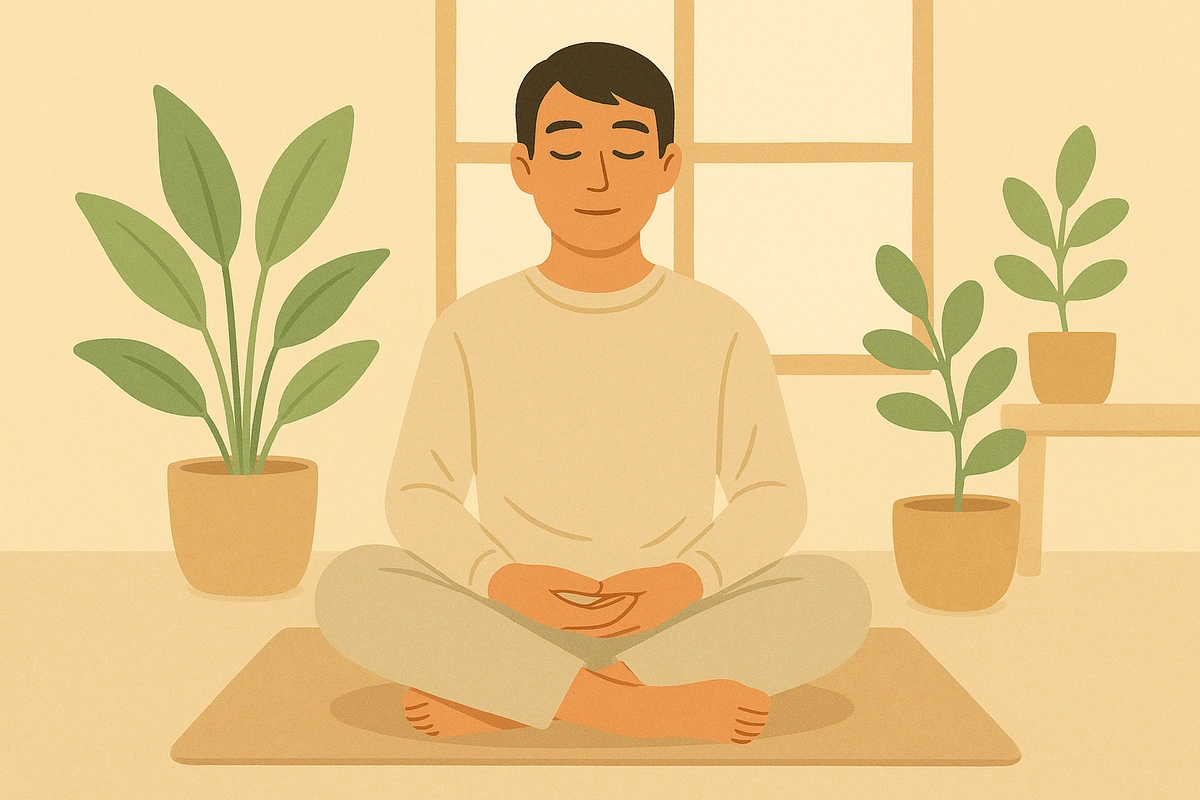Noticing and naming body sensations helps you reconnect with your physical experience and ground yourself in the present moment during anxiety, panic, or emotional overwhelm. This mindfulness practice strengthens the mind-body connection and builds your capacity to recognize early warning signs of distress before they escalate.

Noticing and naming body sensations involves systematically observing and clearly identifying physical sensations throughout your body, especially during moments of intense anxiety, panic, or disconnection. This mindfulness practice helps anchor your attention in the present moment while strengthening the crucial connection between mind and body.
This technique works particularly well because your body exists only in the present moment, making it a reliable anchor when your mind feels scattered. Research shows grounding techniques like body awareness help interrupt your body's stress response and return your brain to safety. Regular practice builds your capacity to recognize early warning signs of anxiety, allowing you to respond more skillfully before symptoms escalate.
Noticing and naming body sensations engages multiple beneficial processes in your brain and nervous system that promote emotional regulation and present-moment awareness.
Neuroimaging studies show that mindfulness training creates changes in brain regions involved in body awareness, particularly the insula, which processes internal bodily sensations. When you systematically scan your body, you strengthen neural pathways that connect physical sensations with conscious awareness.
The practice activates what psychologists call "interoceptive awareness" - your ability to perceive internal bodily signals. Research demonstrates that interoceptive awareness is key to integrating bodily sensations, cognitive processes, and emotional feelings, providing access to important mechanisms of emotion regulation.
Labeling sensations engages your prefrontal cortex, the brain region responsible for executive control and emotional regulation. This process, known as "affect labeling," helps calm your brain's alarm centers while increasing activity in areas that promote stability and clear thinking.
Grounding techniques like body awareness help interrupt your body's fight-or-flight response during anxiety or panic by focusing attention on present-moment safety rather than perceived threats. Your body exists only in the here and now, making it a reliable anchor when your mind feels scattered.
The systematic nature of this practice engages your parasympathetic nervous system, which promotes relaxation and recovery. As you move attention through your body with acceptance rather than judgment, you signal safety to your nervous system, allowing natural healing processes to engage.
A meta-analysis of 15 studies found that mindfulness practices focusing on body awareness showed significant positive effects on improving body awareness accuracy, which translates to better emotional regulation and stress management over time.
For people who have experienced trauma or chronic stress, this practice offers a gentle way to rebuild trust in their body's wisdom. Body awareness helps people disengage from automatic patterns of rumination and enter a "being-mode" characterized by direct engagement with present-moment experience.
"I can't feel any sensations or everything feels numb" - This is completely normal, especially if you're used to disconnecting from your body during stress. Start by noticing very obvious sensations like temperature or pressure, and be patient as sensitivity gradually returns.
"The sensations feel too intense or scary" - Begin with less charged areas like your hands or feet before moving to more emotionally connected regions like chest or stomach. Ground yourself with breathing if sensations feel overwhelming.
"My mind keeps wandering to thoughts and worries" - This is expected and part of the learning process. Each time you notice your mind has wandered and return to body awareness, you're successfully practicing the skill, not failing at it.
"I start feeling more anxious when I focus on my body" - Some people initially experience increased anxiety as they become more aware of physical sensations. Start with very brief sessions and combine with calming breathing. Consider working with a qualified instructor if anxiety persists.
"I don't notice any changes in my anxiety or mood" - Benefits often develop gradually and may be subtle at first. Focus on the simple act of building body awareness rather than achieving specific emotional outcomes. Change often happens slowly.
"I feel like I'm 'doing it wrong'" - There's no perfect way to notice body sensations. If you're paying attention to physical experience and naming what you discover, you're practicing correctly, regardless of what you find.